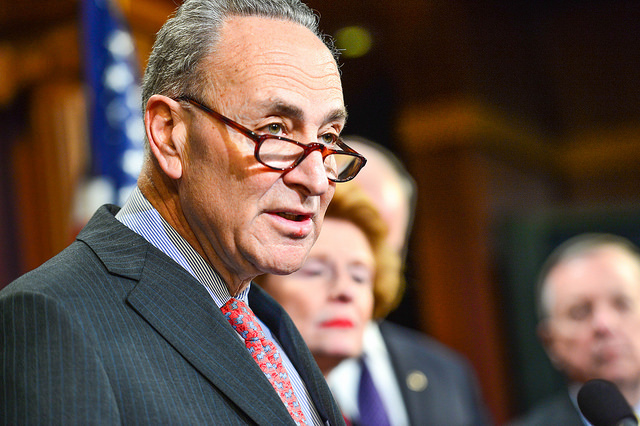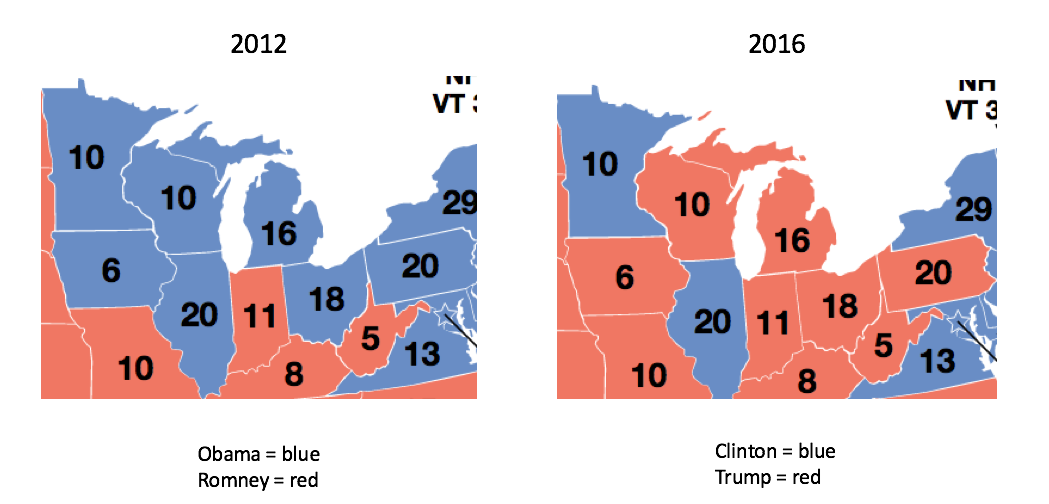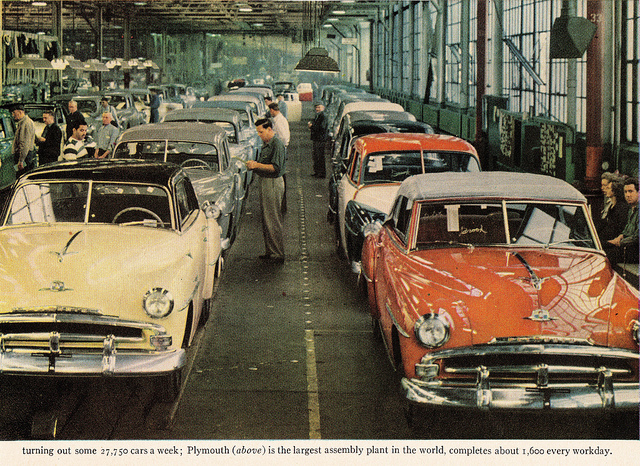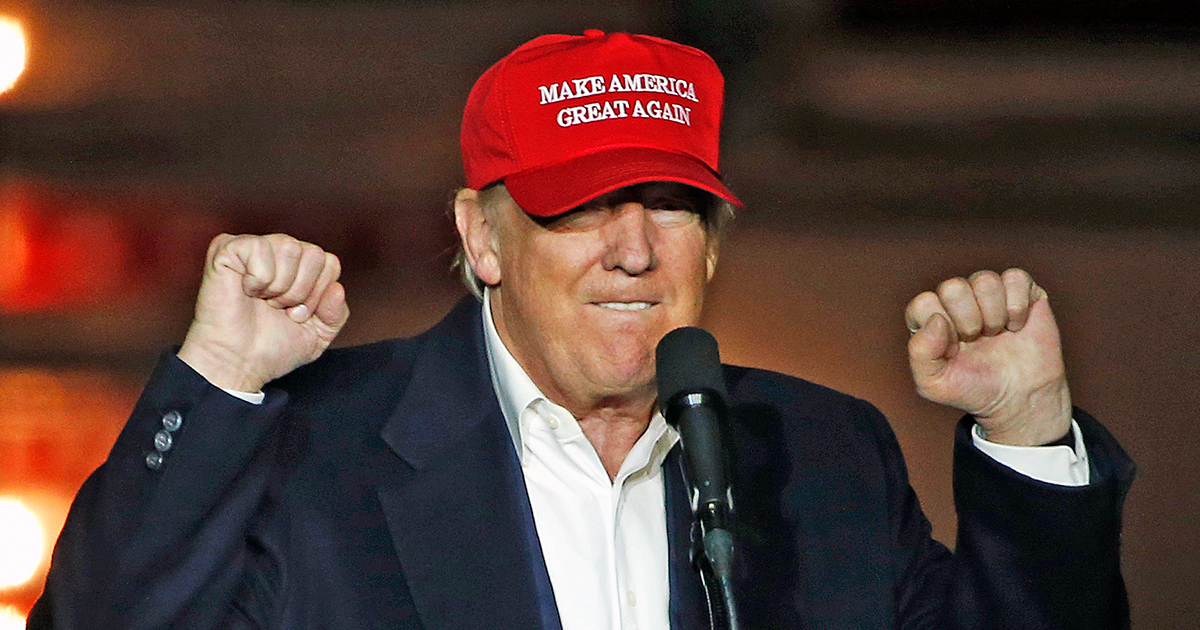The Two Explanations for Trump's Stunning Victory

By:
How did Donald Trump win? Over the last few days, as more data rolls in, two leading theories have emerged to explain Trump's stunning victory on Tuesday.
Let's analyze them.
Theory No. 1: Hillary Clinton and the Democrats lost touch with working class whites in the Midwest.
 AP/John Locher - apimages.com
AP/John Locher - apimages.com
Most of the post-election analysis asserts that Donald Trump's success with working class white voters in the Midwest flipped the electoral map to the Republicans. The cause for this change? Democrats (and Clinton) lost touch with working class white people.
So why did working class whites, who were the backbone of the Democratic Party in the 20th century, vote overwhelmingly for Trump?
Democrats' embrace of free trade and Wall Street is the reason, according to many. Robert Reich, former Labor Secretary under President Bill Clinton, made this case in The Guardian:
Over "the last three decades, the party has been taken over by Washington-based fundraisers, bundlers, analysts, and pollsters who have focused instead on raising campaign money from corporate and Wall Street executives and getting votes from upper middle-class households in 'swing' suburbs."
Bernie Sanders has made this argument. So has Elizabeth Warren.
There's pretty good evidence that Reich is correct that Democrats have at least shifted their focus from working class white voters to suburban white collar workers and people living in cities. Look no further than the words of Sen. Chuck Schumer, the Democrats' leader in the Senate. He said this in August:
"For every blue-collar Democrat we lose in western Pennsylvania, we will pick up two moderate Republicans in the suburbs in Philadelphia, and you can repeat that in Ohio and Illinois and Wisconsin.”
 Senate Democrats / Flickr - flickr.com
Senate Democrats / Flickr - flickr.com
This strategy absolutely failed. Except for Illinois, which Clinton carried easily due to the immense weight of the Chicagoland area, Schumer's prediction was totally and utterly wrong. In fact, the results were quite the opposite of Schumer's prediction — notice how much redder the Midwest looks in 2016 compared to 2012:
 Wikimedia Commons
Wikimedia Commons
The problem for Democrats was that too many 2012 Obama voters in the Midwest moved to Trump in 2016, and Clinton did not win by wide enough margins in metropolitan areas to make up for them. In fact, a Washington Post report showed that Trump won 209 counties that voted twice for Obama — many of which were in the Midwest swing states that gave the election to Trump.
Exit polls tell us that Clinton lost this group by 39 percent of the vote (67 percent to 28 percent) while Obama only lost by 25 percent in 2012 (61 percent to 36 percent.). This 14 percent gain for Trump made all of the difference.
It's obvious that working class whites jumped to Trump, and it hurt Clinton badly, but is there anything Democrats could have done to keep them?
 Alden Jewell / Flickr - flickr.com
Alden Jewell / Flickr - flickr.com
That's the real question. Can Democrats still appeal to working class whites while also adhering to their progressive principles related to gender, race, and sexual orientation? If these working class whites are turned off by the cultural liberalism of Democrats, would a robust left-wing economic agenda appeal to them anyway?
Jacobin's Connor Kilpatrick argued that Bernie Sanders' campaign is proof that it would:
"The belief that bringing in the nonvoting white working class requires surrendering on commitments to gender equality and antiracism is simply that — a belief. Sanders simultaneously attracted the support of white working class voters in states like Indiana, Wisconsin, and Michigan even as he repeatedly championed Black Lives Matter and the fight against racial discrimination."
 AP Photo/Troy Wayrynen - apimages.com
AP Photo/Troy Wayrynen - apimages.com
Theory No. 2: Racism was the deciding factor in this election.
 Twitter/@billygee12 - twitter.com
Twitter/@billygee12 - twitter.com
CNN's Van Jones went viral on election night for an eloquent, emotional moment when he expressed the feelings of marginalized Americans who are frightened at the prospect of a Trump presidency and who felt like his election was essentially a reassertion of white nationalism.
"This was a whitelash against a changing country. It was a whitelash against a Black president," Jones said.
And we saw a similar sentiment on Twitter:
The only demographic to support Trump across the board? White people.
So is it really true that racism — not economics — is the main culprit for the sharp divide between white voters and nonwhite voters?
Some disagree, highlighting the fact that 34 percent of Obama's 2012 voters were whites without a college degree, according to data journalist Nate Cohn. If racism was the deciding factor in 2016, how do we explain the reality that working class whites voted for Obama in 2012?
On the other hand, was Trump's campaign so uniquely centered on race that he ginned up a critical mass of racial animus among white people, even those who voted for a Black president? Slate's Jamelle Bouie believes so:
"John McCain indulged racial fears, and Mitt Romney played on racial resentment, but they refused to go further. To borrow from George Wallace, they refused to cry 'nigger.' This is important. By rejecting the politics of explicit racism and white backlash, they moved the political battleground to nominally color-blind concerns. ... Looking back, I thought this meant we had a consensus. It appears, instead, that we had a detente. And Trump shattered it."
 Alex Mierjeski/ATTN:
Alex Mierjeski/ATTN:
We know that race played a major role in this campaign and that fears about immigration and the need for "law and order" — a dog whistle for racial divisiveness — were a constant theme in Trump's stump speeches. Indeed, It was Trump's hard-line immigration stance and his trash-talking of Mexicans that got his campaign rolling last year.
 AP/Gene J. Puskar - apimages.com
AP/Gene J. Puskar - apimages.com
But were all 60 million Trump voters racist? That seems to be a stretch. Exit polls say that a major reason voters rejected Clinton was simply her closeness to the Washington establishment and Wall Street. Four in 10 voters said the country "needed change," and anyone, including Clinton, associated with the status quo was a nonstarter.
That's a good thing for Democrats, because it's hard to see how the party wins another election if they write off every Trump voter. As Slate's Will Saletan wrote:
"If you talk about all [Trump voters] as though they're the same thing — if you call them all racists or sexists or bigots or haters — you'll lose more elections. And you'll deserve to lose, because by lumping them all together and dismissing them, you're doing to them what the worst of them have done to you."
A reemergence of the Obama coalition will undoubtedly include some working class whites returning to the Democratic Party, but racial politics have changed forever.
 The White House/Pete Souza - flickr.com
The White House/Pete Souza - flickr.com
At the same time, liberals who point to Obama's success in 2008 and 2012 should be cautious about downplaying race in a changing America. Since the rise of the Black Lives Matter movement, we've seen a wave of activism and social consciousness among minority groups who want Democrats to take an aggressive stance against structural racism — beyond what we saw from the Obama administration.
So how can Democrats appeal to whites without throwing their nonwhite supporters under the bus?
Heather McGhee and Ian Haney-López from the think tank Demos have proposed a solution. They argued last summer that Democrats are making a mistake when they avoid talking to white voters about race and should instead explain how conservatives have used racism to scale back social programs that used to help whites. "Racism helped create the white middle class. Since the Reagan era, racism has helped destroy it," they wrote.
This sounds like an interesting messaging strategy, and it's one of many that should be considered as the Democrats get ready for at least two years in the political wilderness.
This was a change election.
.jpg?auto=format&crop=faces&fit=crop&q=60&w=736&ixlib=js-1.1.0) AP/Charles Rex Arbogast - apimages.com
AP/Charles Rex Arbogast - apimages.com
One fundamental reality was lost in the 17 months of Trump madness: It's very difficult for any party to win a third straight term in the White House. In fact, it's only happened once since 1960.
Throw in the fact that median household income is lower than it was 16 years ago or that Americans saw much of the recovery from the Great Recession disproportionately help the top 1 percent, and it's not surprising that voters were looking for something new.
The choice to nominate an insider like Hillary Clinton, in the face of these antiestablishment headwinds, was obviously a pretty big risk. The pandemonium of Trump's campaign clouded the fundamental fact that this was always an uphill race for Democrats.
These challenges for Democrats were brought sharply into focus on Tuesday night.
